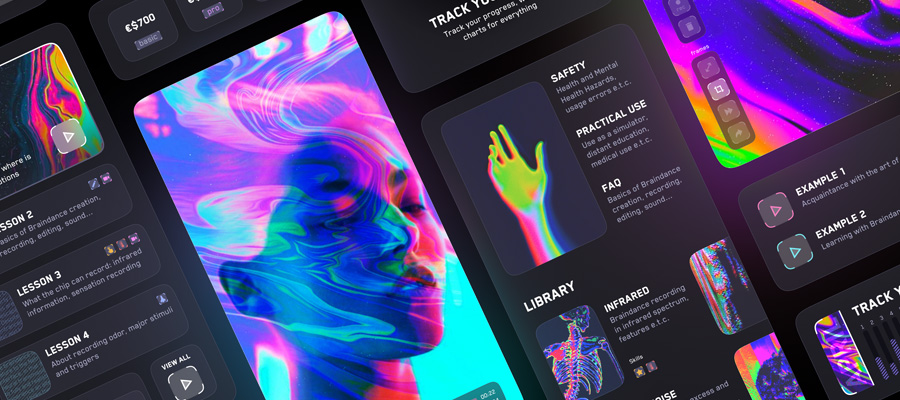According to a recent research report, 10% of all Americans do not use the internet, which, of course, means that 90% do. If you own or manage a business, you know how dangerous it could be to your future to ignore a marketing resource that touches 9 out of 10 consumers from nearly every U.S. demographic. And while you know that in order to be effective in your field you must have a web presence, so do your competitors. That means that your webpage has to not only rank in search engines, it also has to engage visitors, keep them from bouncing away from your page, and all-importantly, convert visitors to clients.

Analytics by Berin Catic
With that last point in mind, we’ve assembled a list of five web marketing tips to improve your client conversions. Remember, there’s no consistent formula for success with internet marketing or converting clients. Any tactic that’s currently producing results can fail after a programmer sitting at Google’s Mount View headquarters changes a line or two of code in the algorithm. That’s why we try to construct game plans that are beneficial to advertisers, their clients, and the people who visit their webpages.
1. Engaging Calls to Action
There is no greater tragedy in web marketing than a boring call to action. Boredom fails nearly 100 percent of the time. “Click here to find out more” is just as likely to get the back button as it is to actually entice a potential client. When users are having a good experience on a webpage, they engage. When calls to action are engaging, visitors often become clients. Here are a few tips within this tip on how to write an engaging CTA:
- Start your CTA with a verb – “Speak to an attorney now.” “Order yours today!” “Start your free trial!”
- Offer a benefit – A free service, a significant discount, or a reward is much more likely to get someone to take the next step than a vague promise for them to “learn more.” For example, “Schedule your free consultation now!” tells the person that they’re going to get a benefit that presumably has value to them without their having to pay for it.
- Keep Your CTAs Simple – The fewer steps that a visitor has to take to contact an account rep, the better. Consequently, CTA buttons should be at the beginning and end of your page, and no more than 200 words of text should separate CTA buttons so that they’re easy to locate on a cellphone screen.
2. Secure Your Site
Having an unsecured site is simply unacceptable. Your site will be collecting your clients’ and potential clients’ information, and that is the first step to establishing trust in your relationship with them. If your site is hacked or your clients’ information is stolen, you may lose that trust and never be given the opportunity to earn it back. This is particularly problematic if you operate a digital business. After all, customers have privacy expectations. This means digital services often run into problems if their reputation for privacy (or lack of) becomes an issue.
Make Certain Your Site’s SSL Certificate is Current
Your SSL certificate does three things:
- It lets your visitors know that your site is secure. Your web address will reflect that it’s a safe site by adding an “s” after the http portion of your web address (https); it will show the word “secure”; or a small lock icon will appear before your web address.
- It encrypts all transferred data in the site.
- It prevents Google from knocking you down in the rankings, which they will do if they discover that you don’t have an SSL.
3. Live Chat Feature
As society’s expectations of the web are growing, live chat features on websites are becoming increasingly important. Law firm website design companies have been adding this feature to lawyer websites for years. For converting visitors, a live chat feature gives you a shot at converting visitors who are just too impatient to wait for an email or phone call from your sales reps. The visitors to your page are coming for information. If they don’t find what they’re looking for, they’re probably going to bounce away — unless there’s someone there to ask. Live chat may be your single best way of establishing an instant relationship with your visitor.
4. Mobile Responsiveness
2016 was the year that cell phone and tablet web searches surpassed computer internet searches. In 2018, 77% of the adult population in the U.S. owned smartphones. What that means is that the information on your website needs to fit on the narrower, taller display of a smartphone. If visitors to your page get frustrated with the way your site displays on their phone, not only will they not stick around long enough to learn about your company, their rapid departure from your page will increase your bounce rate, and that will jeopardize your rankings.
5. Speed is the Key
This is as obvious as it is important: slow website = high bounce rate. With mobile responsiveness in mind, your primary concern should be how fast your page loads on a mobile device — although, your webpage should really be speedy on any device. Load speed is so important to all aspects of the industry, Google released a study in 2018. It found that “as page load time goes from one second to 10 seconds, the probability of a mobile site visitor bouncing increases 123%.”

The findings of this study would indicate that you want your webpage’s load speed to be under three seconds, but if it's faster, all the better.




















